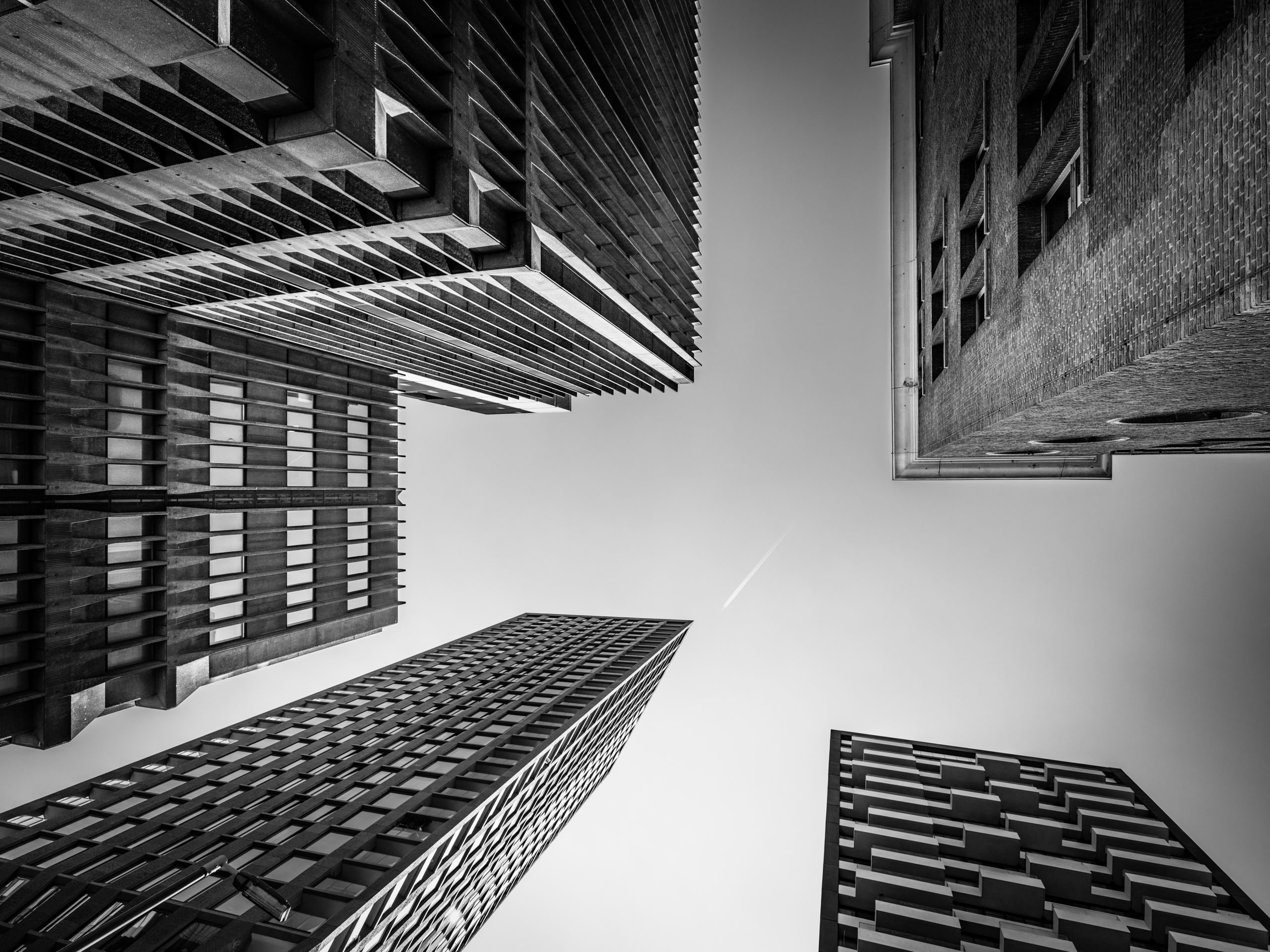I’ve been a dedicated Fujifilm user for over a decade now, ever since the release of the original X-Pro1. Interestingly, my shift to Fujifilm cameras was primarily driven by their compact size. These cameras became my ideal travel companions, and I consistently carried two of them with me. One was equipped with a wide-angle zoom lens, typically the XF10-24mmF4 R OIS WR, and the other with a fast prime lens, usually the XF56mmF1.2 R WR. I cherished how this setup offered remarkable versatility while not significantly adding to the weight, unlike my previous setup, which involved a bulky DSLR with a heavy 24-70mm zoom lens.

I used the soft, directional available light coming in from the side to create this classical portrait of this charcoal monger in Old Delhi… – X-T1 | XF56mmF1.2 R WR | 56 mm | 1-240 sec at f – 1.2 | ISO 1600

… This wide angle shot provides a more context. – X-T1 | XF10-24mmF4 R OIS WR | 20.9 mm | 1-25 sec at f – 4.0 | ISO 2500
The Fujifilm setup allowed me to capture wider vistas and environmental portraits and get up close for more immersive shots. Additionally, when using the fast prime lens, I could create beautiful background bokeh, effectively blurring distracting elements. At the time, I did most of my traveling by bicycle, so weight and size were crucial considerations for me.
One notable advantage of having two cameras at hand was the ability to swiftly capture a photo when I encountered a highly photogenic subject. It was reassuring to still have one camera ready for action, especially when someone picked up one of my cameras, like the X-E1 in this instance, and started inspecting it.
These are still some of my favourite images that I took with the X Series system. I used one of them as the cover of my book ‘101 Tips for Travel Photography’ and the other won me an airplane ticket in a travel photography contest!

X-E1 | XF14mmF2.8 R | 14 mm | 1-640 sec at f – 3.2 | ISO 800

X-Pro1 | XF35mmF1.4 R | 35 mm | 1-80 sec at f – 1.4 | ISO 200
The presence of both a wide-angle zoom and a prime lens provided me with the flexibility to seamlessly switch between capturing environmental scenes and more traditional portraits.
In 2016, I had the opportunity to work with a preproduction GFX 50S, which I brought along to India. While the camera exceeded my needs and perhaps even my photographic capabilities, I was instantly captivated. I vividly recall peering through the viewfinder and marvelling at the incredible level of detail in the 50-megapixel files produced by the larger-than-full-frame sensor. While the GFX Series cameras were larger and more substantial than my X Series companions, within the context of medium format systems, they were relatively compact, fast, lightweight, user-friendly, and even budget-friendly compared to other options.

One of the earliest photos I captured with my preproduction GFX 50S was in Varanasi, India. I have a profound affection for environmental portraits, which reveal my subjects within their surroundings. Consequently, the individuals often appear relatively small within the frame. However, owing to the remarkable resolution of GFX sensors and the exceptional lens quality, these subjects remain impeccably sharp and are portrayed with breath-taking detail.

GFX 50S | GF23mmF4 R LM WR | 23 mm | 1-125 sec at f – 13 | ISO 100
Over the next years, my GFX cameras would travel with me to Ethiopia and Mongolia, to name but a couple of destinations.
Fast forward six years, through four model iterations (GFX 50R, GFX100, GFX100S, and GFX50S II), and a burgeoning lens line-up, Fujifilm introduced the GFX100 II. It offers twice the resolution of the original GFX50 and almost three times the frame rate. It also boasts an improved image stabilization system and an even quicker, AI-powered autofocus compared to the original GFX100. This weather-sealed powerhouse will feel equally at home in the studio, in harsh landscapes, as on urban streets. I’ve taken my GFX cameras to far-flung destinations such as Papua New Guinea, Thailand, Cambodia, and India and inevitably after a day of working, I was usually tired while my equipment was still fresh and fit.
On the GFX-system, my two-camera setup remains comparable to what I did with the X-system: one body with a fast prime lens, invariably the GF110mmF2 R LM WR, and another with a wide zoom lens. Initially, I used the GF32-64mmF4 R LM WR, but with the introduction of the superb GF20-35mmF4 R WR lens, it’s now a permanent fixture on one of my camera bodies.

A wide angle shot of Thai novice monks. I just love the shadow of the cat’s tail. I used a flash with an orange gel on a tall light stand to mimic the setting sun. – GFX100S | GF20-35mmF4 R WR | 21.5 mm | 1-125 sec at f – 5.6 | ISO 800

For this scene of a woman in traditional apparel, I used my trusted GF110 lens and used two out of focus candles to add some foreground interest. – GFX100S | GF110mmF2 R LM WR | 110 mm | 1-60 sec at f – 2.0 | ISO 200
For my maiden excursion with the GFX100 II in Rotterdam, I relied heavily on the GF20-35mmF4 R WR lens. This lens is indispensable for any GFX user seeking to capture wide-angle shots, be it urban vistas, landscapes, or architectural marvels.

The GF20-35mmF4 R WR is an ideal and very flexible companion to photograph architecture, as this shot taken just outside of Rotterdam’s Central Station shows. – GFX100 II | GF20-35mmF4 R WR | 20 mm | 1-110 sec at f – 18 | ISO 320

In this shot of the iconic Erasmus bridge, I used Photoshop to combine a 30 second exposure of the bridge with a shorter (1/7th second) one to give the runner just the right amount of blur.
Ever since the GFX Series debuted, photographers have been urging Fujifilm to create a Tilt/Shift lens for the system. They took their time, but the outcome was well worth the wait. The new GF30mmF5.6 T/S lens is incredibly sharp, to the point where I could probably use it for shaving.

The GF30mmF5.6 T/S took its time to join the GFX lens line-up but its incredible finishing and image quality makes it worth the wait. – GFX100 II | GF30mmF5.6 T/S | 30 mm | 1-8 sec at f – 20 | ISO 80
During my city trip to Rotterdam, I grew fond of the flexibility of the GF100-200mmF5.6 R LM OIS WR lens for capturing tighter, architectural shots. When it comes to portraits, I lean toward the wider aperture of the GF110mmF2 R LM WR, but for architectural photography, where I typically employ narrower apertures, the GF100-200mmF5.6 R LM OIS WR proves to be a valuable tool.

The GF100-200mmF5.6 R LM OIS WR is an ideal and relatively lightweight lens to capture tighter architectural shots. – GFX100 II | GF100-200mmF5.6 R LM OIS WR | 132.9 mm | 20.0 sec at f – 11 | ISO 80

Rotterdam was heavily bombarded during the Second World War, and as a result the city boasts an incredible concentration of modern architecture and skyscrapers. – GFX100 II | GF20-35mmF4 R WR | 20 mm | 1-10 sec at f – 4.0 | ISO 200

No visit to Rotterdam is complete without visiting the iconic Cube Houses. – GFX100 II | GF20-35mmF4 R WR | 35 mm | 13.0 sec at f – 14 | ISO 100
One of the reasons for embracing larger sensor cameras is their ability to infuse a three-dimensional quality into images, particularly when combined with large aperture lenses. The new GF55mmF1.7 R WR lens excels in this regard. As seen in the images I captured of videographer Matthias, the more than two-stop increase in aperture effectively softens busy backgrounds. This lens presents an enticing choice for wedding photographers or anyone shooting portraits in bustling environments.
The GF55mmF1.7 R WR’s large maximum aperture combined with the large sensor of the GFX lets you throw even the busiest of backgrounds into a pleasing blur, allowing you to focus on your subject.

GFX100 II | GF55mmF1.7 R WR | 55 mm | 1-2000 sec at f – 4.0 | ISO 500

GFX100 II | GF55mmF1.7 R WR | 55 mm | 1-2000 sec at f – 1.7 | ISO 100
The new GFX100 II, in my opinion, strikes the perfect balance between the GFX100S and the original GFX100. It’s compact yet powerful when the need arises and is fully expandable with the incredibly practical EVF-TL1 Tilt Adapter and an optional vertical battery grip. From the moment I got my hands on the preproduction unit, it was clear to me that Fujifilm had another winner on their hands — one that I’ll be more than happy to take with me on my upcoming trips to Thailand and Cambodia early next year.





















































